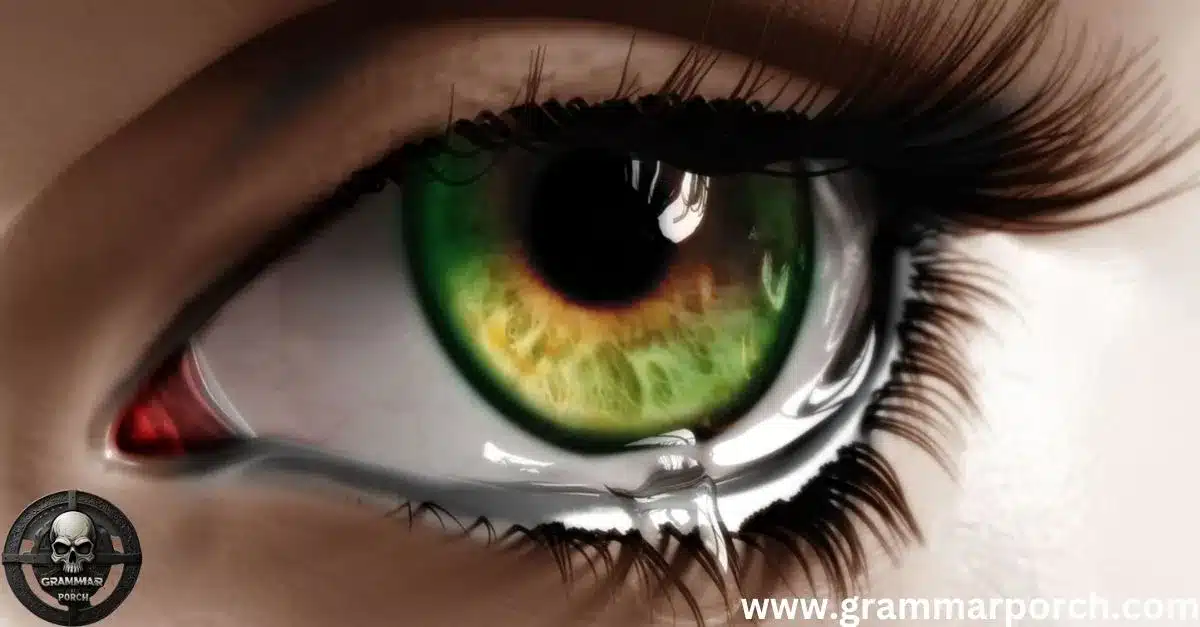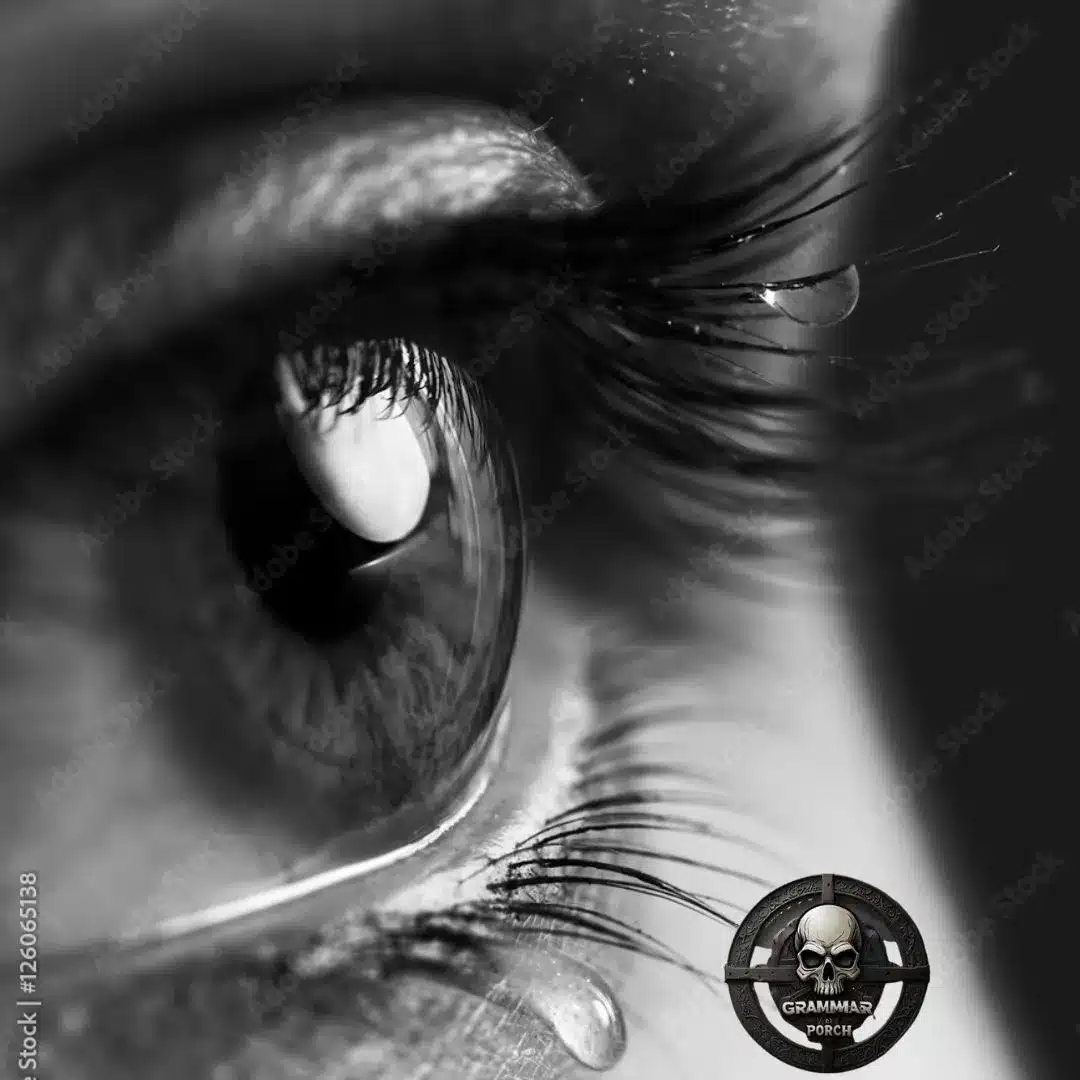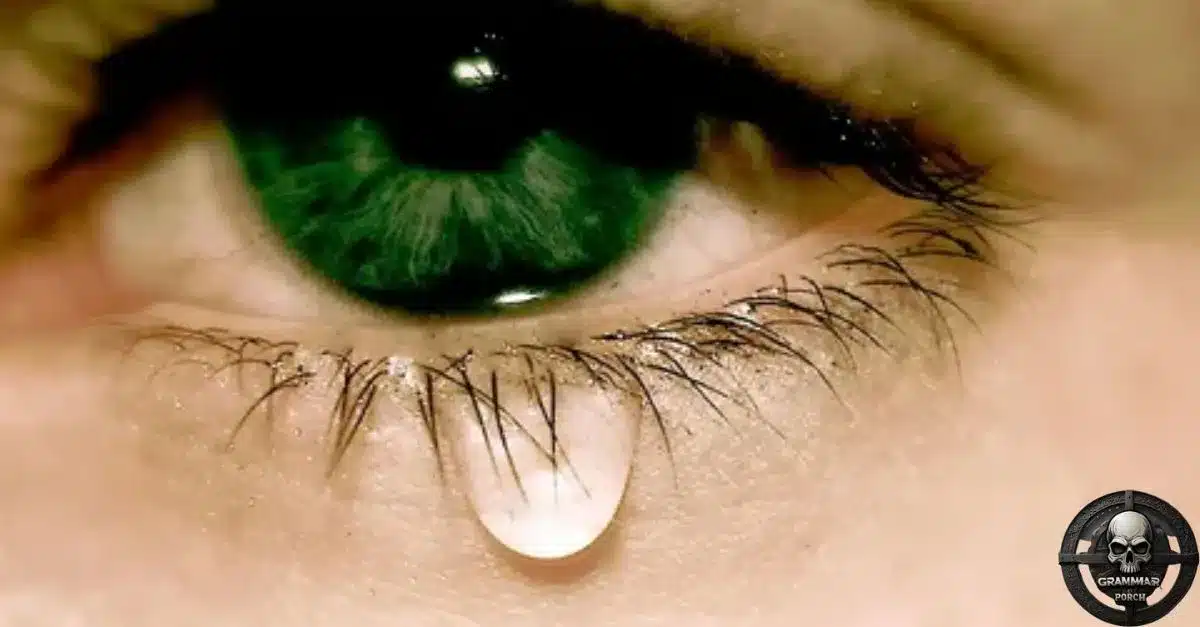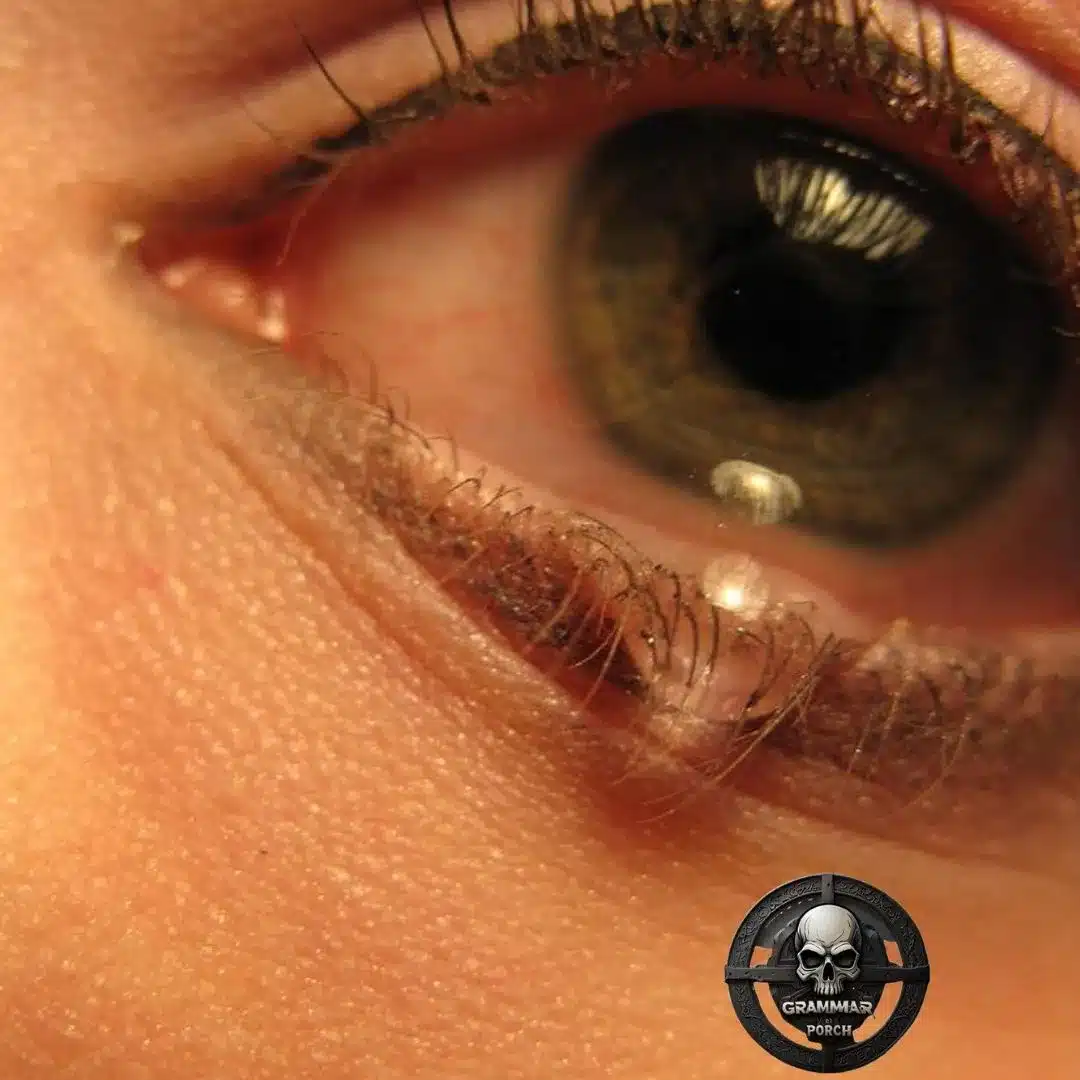Is the Tear Word Correct?
Understanding whether you’re using the correct past tense of tear can be tricky. Many English learners often mix up words like tore, teared, and torn, making sentences confusing.
The confusion comes from the different meanings of tear and how each form changes based on usage. Learning these differences ensures clear and correct communication.
When people ask, “Is ‘teared’ right?” or “Should I use ‘torn’.” it helps to know how each word works in the language. By learning tear tense rules, you can master when to use each form and avoid mistakes.
Definition of Word Tear

The word “tear” has various definitions depending on context. The tear verb meaning relates to ripping or pulling apart by force. However, tear as a noun refers to a drop of fluid that forms in the eye, usually when someone cries.
This distinction is essential because each meaning leads to a different verb tense or usage.To make it simpler, the tear word definitions can be split into the action of tearing (e.g., ripping paper) and the emotional act of tears in eyes (e.g., crying). These varied definitions explain why different past forms are often misused.
Meaning of Tear
The meaning of tear as a verb can be broken down into tearing an object or crying. For example, when you rip a piece of fabric, you are using “tear” to describe the action of separating it by force.
On the other hand, when someone cries, they shed tears. This dual tear usage explains why learners mix up forms like teared and torn.
The tear noun meaning also refers to the drop that comes out when we cry, but as a verb, it could mean to both rip apart or express strong emotion by crying. This makes understanding the tear verb past forms essential for proper usage.
Infinitive
The bare infinitive form of the word is “to tear.” This form is used when expressing a general idea without indicating time.
For instance, “I want to tear this paper into pieces” showcases the tear infinitive in a simple context. It is helpful to remember that the infinitive does not change based on tense.
Past Simple
The simple past tense of tear is “tore.” This is used to describe an action that happened in the past. For example, “She tore her dress while running.”
Understanding how to use tore in past-tense sentences is crucial for expressing past actions accurately. The usage of tore is straightforward, but its similarity to other past forms can confuse learners.
Past Participle
The past participle of “tear” is “torn.” It is used with auxiliary verbs like “has,” “have,” or “had” to form perfect tenses.
For instance, “The book has been torn for a while” is a perfect example of torn in context. Knowing the correct tense torn helps in constructing sentences that use complex tenses and passive voice.
Pronunciation of “Tear,” “Tore,” “Torn,” and “Teared”

Understanding the pronunciation of tear and its related forms is essential. The present tense “tear” sounds like “tair” when referring to ripping, but it sounds like “teer” when talking about crying.
The tore pronunciation rhymes with “more,” while torn pronunciation is the same as “born.” The less common teared pronunciation sounds like “teerd.” This subtle difference helps with clear communication.
When to Use Each Form?
Knowing when to use each form of “tear” can improve your writing and speaking. Use the bare infinitive “to tear” for intentions, like “I need to tear this sheet.” For the past simple form, “tore,” use sentences such as “He tore up the letter.”
The past participle “torn” fits in perfect tenses like “The paper has been torn to pieces.” Remember that teared is used when talking about crying, such as “She teared up at the sad movie.”
Common Mistakes
One of the common mistakes learners make is using “teared” instead of “tore” when referring to past actions involving ripping. Torn in grammar is another area where confusion occurs, as it’s sometimes wrongly replaced with “teared.”
Misusing in passive voice often happens when people write sentences like “The paper was teared” instead of “The paper was torn.”
Confusing Forms
The forms “tore” and “torn” often cause confusion due to their similar sounds. Understanding tore vs. torn can clear up this mix-up. “Tore” is the simple past of tear, while “torn” is the past participle.
The use of teared is even more confusing, as it applies only to crying. Knowing the difference tear vs. tear helps avoid these errors.
The Past Tense of “Tear”

The past tense of tear is “tore,” which is used for simple past actions. Sentences like “She tore the envelope open quickly” illustrate the correct use.
The tear verb past forms ensure that your writing is accurate and avoids ambiguity.
| Form | Example Sentence |
| Present | “I tear the paper.” |
| Past | “I tore the paper.” |
| Future | “I will tear the paper.” |
A Simple Table Showing the Present, Past, and Future Tense of the Verb “Tear”
| Tense | Form |
| Present | tear |
| Past | tore |
| Future | will tear |
Origins of the Word “Tear”
The word “tear” comes from Old English “teran,” which means to rend or rip apart. Its history ties back to Germanic roots, showing that tear verb meaning as “to rip” has been consistent over time. The tear noun meaning relating to eye drops comes from a different origin, Middle English “ter.”
The Noun “Tear” (The Fluid Drop from the Eye)

Tear as a noun refers to the droplets that form when crying. These tears in eyes can symbolize sadness, joy, or other strong emotions.
When using “tear” in this sense, be aware that the past forms like teared only apply to emotional crying, not physical ripping.
The Verb “Tear” (To Rend or Pull Apart by Force)
This use of “tear” means to rip something apart. Sentences like “I will tear this paper” illustrate this verb usage.
The past forms tore and torn show how the action changes over time, as in “He tore the fabric yesterday” and “The fabric has been torn.”
The Verb “Tear” (To Weep or Cry)
When “tear” means to cry, its past tense becomes “teared.” For instance, “She teared up during the speech” highlights this emotional use.
The definition of teared can confuse some learners, but it only applies to the act of crying or shedding tears.
The Noun “Tear” (A Tearing or Laceration)
“Tear” as a noun also describes a rip or laceration. When you say “There’s a tear in the fabric,” it refers to damage. Understanding this tear noun meaning helps when discussing physical splits or breaks.
The Verb “Tear” (To Move Noisily)
Sometimes, “tear” means to move quickly and loudly, like “The car tore down the road.” This usage is less common but adds another layer to the multiple meanings of tear.
Synonyms for “Tear,” “Tore,” “Torn,” and “Teared”
“Tear” (Present Tense)
- Rip
- Split
- Shred
- Rend
- Slash
“Tore” (Simple Past Tense)
- Ripped
- Split
- Sliced
- Severed
- Frayed
“Torn” (Past Participle)
- Shredded
- Ripped apart
- Severed
- Damaged
- Fractured
“Teared” (Crying or Shedding Tears)
- Wept
- Sobbed
- Cried
- Bawled
- Misted
Examples of “Tear,” “Tore,” “Torn,” and “Teared” in Sentences

“Tear” (Present Tense)
- I tear up old newspapers for the compost pile.
- The cat likes to tear the curtains when it’s playful.
- You should tear the bread by hand for a rustic look.
- I sometimes tear up when I hear that song.
- Don’t tear the envelope; you might need it later.
- Kids often tear their homework when they get frustrated.
- The wind can tear through the trees with great force.
- I watched her tear into the gift wrap with excitement.
- Always tear lettuce by hand to avoid bruising it.
- If you tear the contract, it becomes void.
“Tore” (Simple Past Tense)
- He tore his shirt during the hike through the woods.
- I tore the letter in anger and threw it away.
- The thunderstorm tore branches from the trees.
- She accidentally tore the pages out of her notebook.
- The dog tore its toy apart within minutes.
- We tore down the old shed in the backyard last summer.
- He tore the wrapping paper to reveal the surprise inside.
- I tore through my notes, searching for the answer.
- The wind tore the tent, making it useless for camping.
- The toddler tore the magazine while playing with it.
“Torn” (Past Participle)
- The old quilt had been torn and patched many times.
- My jeans were torn at the knees, giving them a rugged look.
- The letter was torn before anyone could read it.
- His heart felt torn between staying and leaving.
- The sail had been torn by the fierce winds overnight.
- The pages of the book were torn, making it hard to read.
- The banner was torn during the storm but still hung high.
- Her emotions were torn between excitement and fear.
- The map was torn into pieces, making it useless.
- The torn paper scattered across the room after the argument.
“Teared” (Past Tense for Crying)
- He teared up when he heard the news of his promotion.
- She teared up as she listened to the heartfelt speech.
- The entire audience teared up during the movie’s sad ending.
- I teared up when I saw my old friends after many years.
- The child teared up when her toy broke unexpectedly.
- He teared up remembering the good times with his grandparents.
- The heartfelt note made her teared up with joy.
- The soldier teared up as he was welcomed home by his family.
- She teared up at the sight of her wedding dress.
- His eyes teared up from laughing too hard at the joke.
FAQs
What is the past tense of “tear” when talking about ripping something?
The past tense of “tear” when referring to ripping or pulling apart is “tore.”
How do you use “torn” in a sentence?
“Torn” is the past participle of “tear” and is used with auxiliary verbs, such as “has” or “had,” e.g., “The book has been torn.”
Is “teared” correct for crying?
Yes, “teared” is correct when referring to crying, as in “She teared up during the speech.”
Why is “teared” sometimes confused with “tore”?
“Teared” and “tore” are confused due to their similar sounds, but they have different meanings. “Tore” is used for ripping, while “teared” is used for crying.
What are common mistakes with the word “tear”?
A common mistake is using “teared” when referring to a ripped item instead of using “tore” or “torn.”
Conclusion
The correct past tense of “tear” helps avoid common mistakes between forms like tore, torn, and teared. Understanding their meanings and usage ensures clarity in writing and speech. With practice, you can confidently use these words to communicate more precisely and effectively.

Larry is an experienced blogger with a passion for simplifying grammar. With years of expertise in writing and language, he shares insightful tips on punctuation, synonyms, and the intricacies of English grammar at **Grammar Porch**. His approachable style helps readers improve their writing skills with ease.

